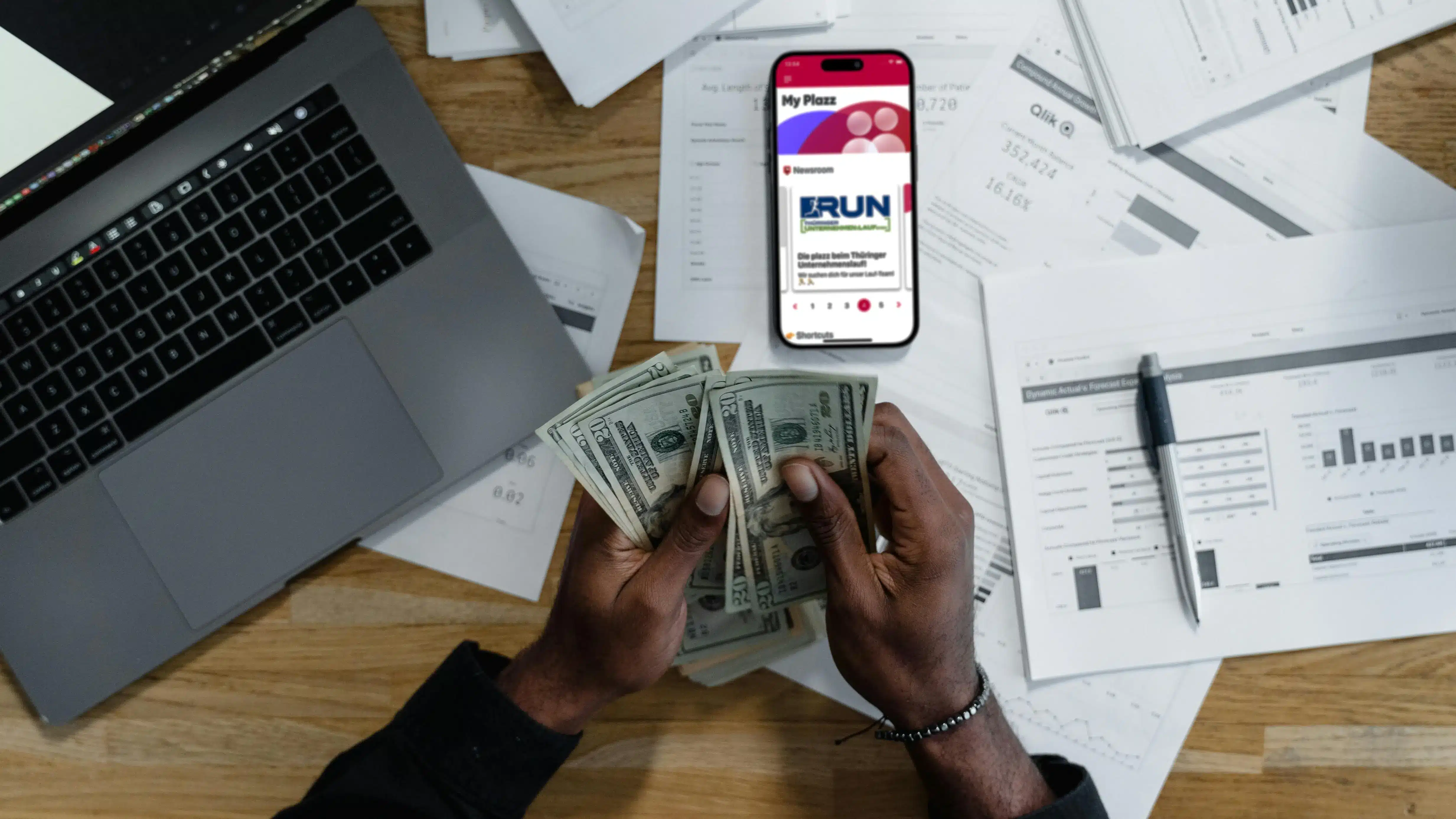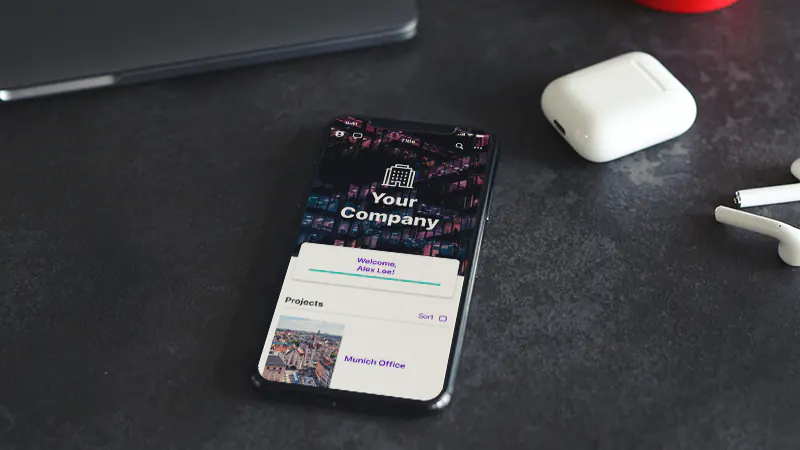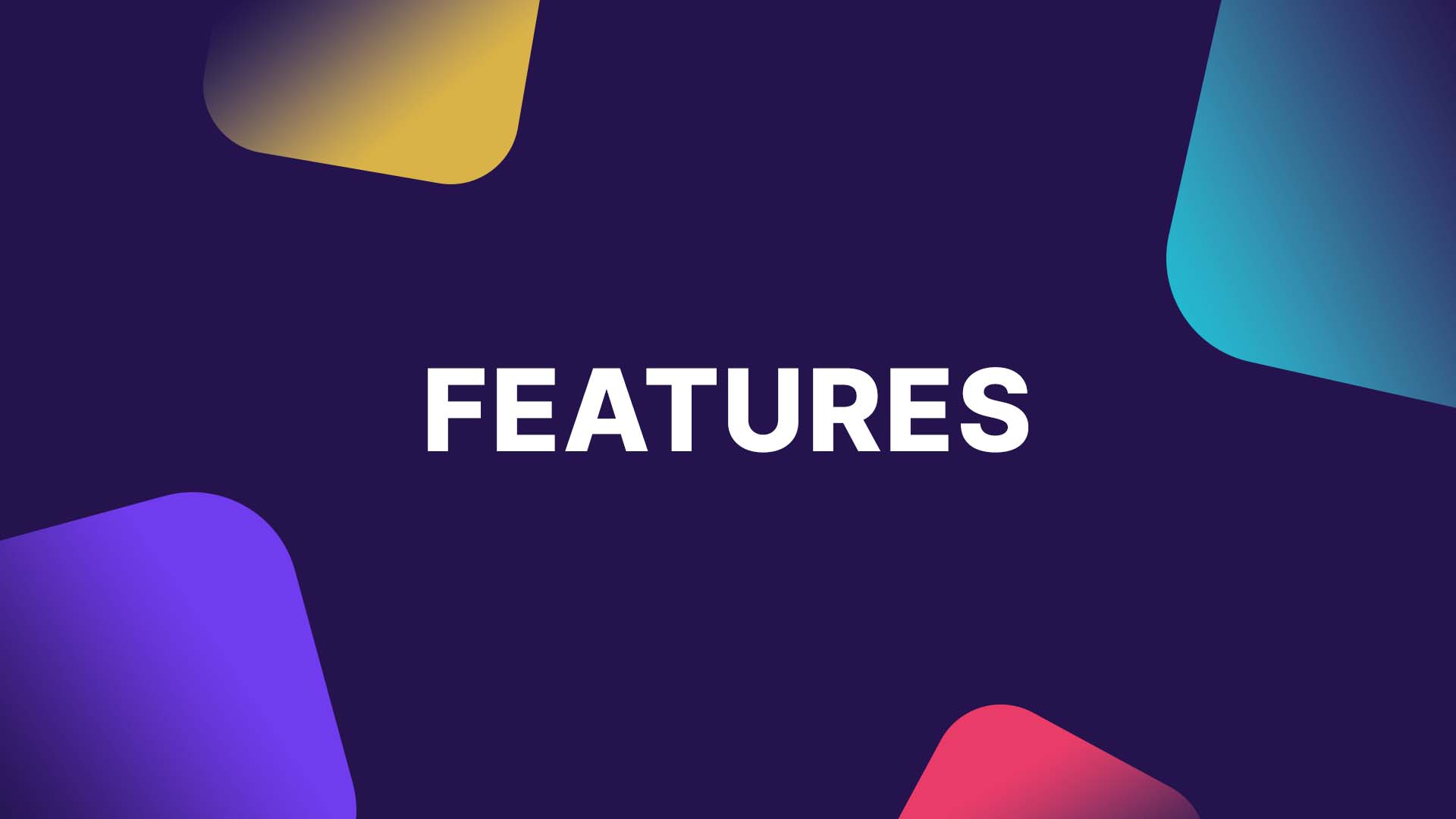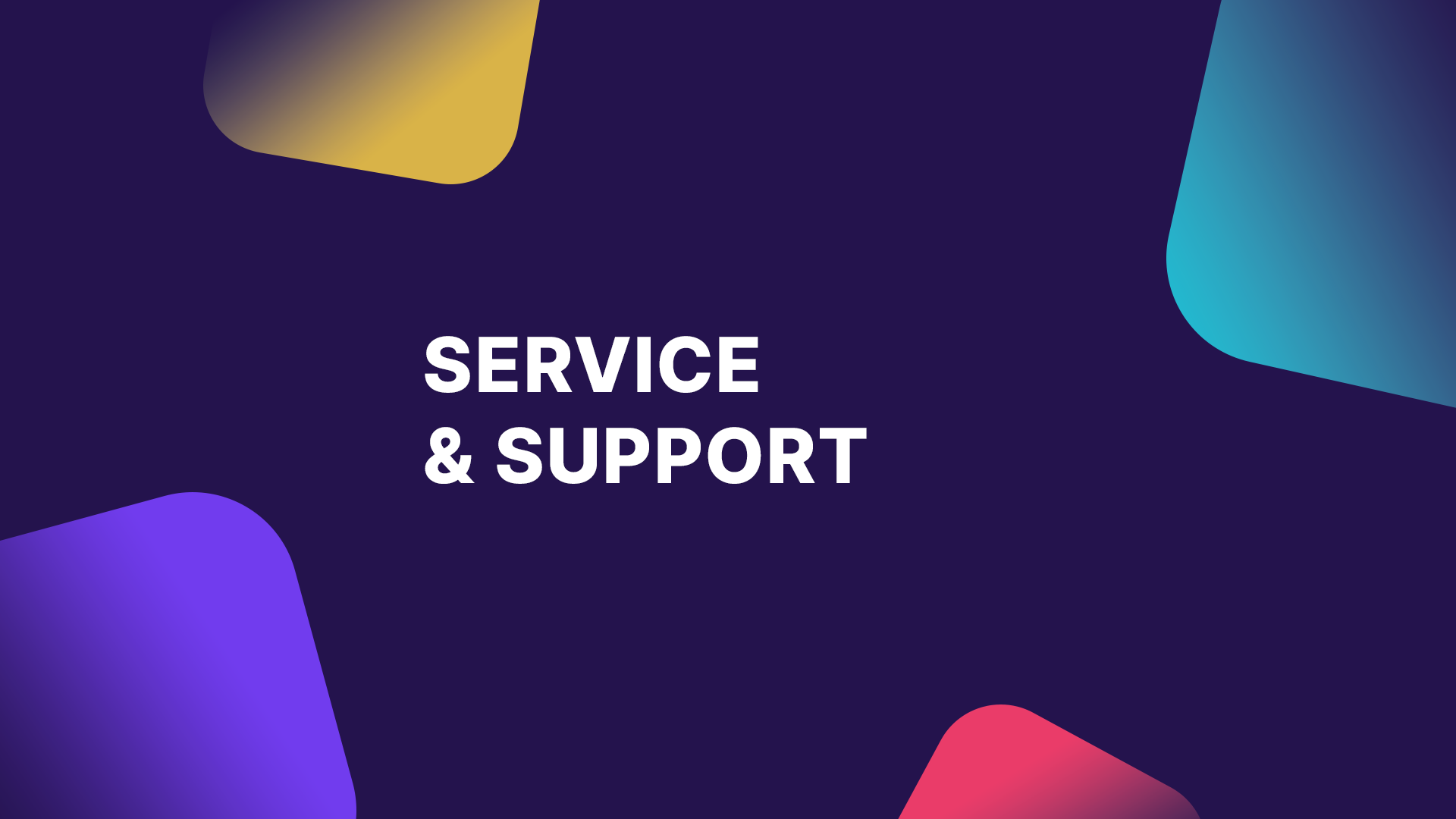The introduction of an employee app opens up numerous opportunities to improve internal communication and efficiency within a company. In our previous article“Requirements of an employee app“, we highlighted the most important criteria and functions that such an app should have. Now we will go one step further and show you how to proceed successfully from planning to implementation. This article provides you with practical tips and concrete steps to implement your employee app effectively and efficiently in your company. You will learn how to structure the project, overcome challenges and optimally prepare your employees for the new technology.
Planning and creation of the specifications for your employee app
A solid requirement specification forms the foundation for the successful introduction of your employee app. In the specifications, you clearly and precisely define all the requirements and objectives of the project. This helps to structure the development process and serve as a clear guideline for everyone involved. To ensure that the employee app meets the needs of your organization, it is crucial to involve all relevant stakeholders at an early stage. This includes not only managers, but also representatives of the various departments that will later work with the app.
Through workshops, interviews and surveys, you can collect the diverse requirements and wishes of the stakeholders. Record these requirements in detail in the specifications in order to avoid misunderstandings and have clear documentation. Each requirement should be clearly described and justified. Once you have collected all the requirements, it is important to prioritize them. Not all wishes and requirements have the same urgency or the same benefit for the employee app.
Create a prioritization list that differentiates between must-have criteria, should-have criteria and can-have criteria. Must-have criteria are indispensable functions without which the app would not be useful. Desired criteria are important but not absolutely necessary functions that significantly increase the usefulness of the app. Optional criteria are additional features that are nice to have but not crucial for the success of the app. This prioritization helps you to clearly define the development focus and ensures that the most important functions are implemented first.
This structured approach ensures that the employee app contains all the necessary functions and meets the expectations of your employees. A well-developed requirement specification minimizes the risk of misunderstandings and undesirable developments and lays the foundation for a successful implementation of the app. You can find more information and detailed descriptions of the various specifications in our previous blog post: Requirements of an employee app.
Choosing the right provider for your employee app
Start by establishing clear criteria for selecting a reliable provider. These criteria can include the features offered, customization options, pricing and support services. These criteria will help you to make an objective assessment of the various providers.
Then look at testimonials and customer reviews from potential providers to ensure that the provider is reliable and has received positive feedback from other companies. This information will give you an insight into the quality of service and other users’ satisfaction with the employee app.
Once you have drawn up a list of potential providers, you should obtain quotes and compare them carefully. Request detailed quotes that cover all important aspects such as functional scope, costs, implementation time and support services. Compare these offers to find the best price-performance ratio. Pay attention not only to the price, but also to the quality and scope of the services offered.
Then make sure that all agreements are clearly and comprehensibly formulated and protect your interests. The contract should contain detailed information about the services, support, cost structure and term. Read the contract carefully and clarify any ambiguities before you sign it.
The provider of your employee app must ensure that your employees’ data is processed securely and in accordance with the applicable data protection regulations. Check the data protection guidelines of the provider(s) and ensure that they comply with the requirements of the General Data Protection Regulation (GDPR).
This structured approach ensures that you find the right provider company for your employee app. A provider company that not only meets the functional requirements, but also impresses in terms of reliability, security and customer service is essential for the success of the project. This will ensure a successful implementation and a high level of employee satisfaction with the new app.
Test phase with minimal feature set for your employee app
The main aim of this phase is to gather feedback at an early stage and identify initial problems. Start by selecting a representative group of test users. This group should consist of different departments and hierarchical levels to ensure that different perspectives and needs are taken into account. A good mix of technical and non-technical employees can provide valuable insights into the usability and functionality of the app.
Then define the minimum feature set, which includes the most basic functions of the employee app. These core functions should cover the essential tasks and processes that your app should support. These may include communication functions, access to important documents and simple task management tools. By focusing on these basic functions, you can ensure that the app is stable and user-friendly in its basic version.
As soon as the test group and the feature set have been determined, start the test phase. Give the test users clear instructions and objectives to follow during the test. Make sure they know how to give feedback and report problems. It can be helpful to schedule regular check-ins or feedback sessions to ensure that any issues are captured in a timely manner. Collect feedback continuously and document any issues that arise and suggestions for improvement. A structured approach to data collection and analysis is essential here.
During the test phase, you should also monitor and analyze the use of the app. Which functions are used most frequently? Where do most problems occur? This data can help you to further optimize the app and ensure that it meets the needs of the users. A good bug tracking system can be very helpful here in order to systematically record and rectify errors.
Once the test phase is complete, carefully analyze the collected data and feedback. Identify common problems and prioritize them according to their urgency and their impact on the user experience. This analysis will help you to make targeted improvements and tailor the employee app optimally to the needs of your employees. Create a detailed plan for implementing the necessary changes and communicate this plan clearly to everyone involved.
The test phase gives you the opportunity to test the app under real-life conditions and ensure that it is both functional and user-friendly. With a well-thought-out approach to the test phase, you lay the foundation for a successful implementation and long-term acceptance of your employee app.
Why buffers for deadlines are crucial when introducing an employee app
Realistic time planning forms the basis for ensuring that all project phases proceed without unnecessary pressure and hectic. Start by realistically assessing the overall project timeline and setting appropriate timeframes for each phase. Also take into account possible delays and unexpected challenges that may arise during the development and implementation of the app.
Scheduling buffer times in your project plan helps you to react flexibly to unforeseen events. These buffer times should be planned into each project phase in order to be able to absorb small delays without jeopardizing the entire schedule. In this way, you can ensure that the project remains on schedule even in the event of unforeseen obstacles and that the quality of the employee app does not suffer.
If you have planned buffer times, you can cope with delays more easily without the entire project coming to a standstill. It is important to remain flexible and adjust the project plan as necessary. Regular reviews of project progress and timelines allow you to react to delays early and take appropriate action.
A flexible project plan is therefore essential. It enables you to react quickly and efficiently to changes and new requirements. Hold regular meetings with your team and stakeholders to discuss the current status of the project and make adjustments if necessary. This flexibility ensures that the employee app can be delivered on time and in high quality.
Avoid sudden feature requests for the employee app
Structured change management forms the basis for this. It ensures that all changes are controlled and planned. Clearly defined change management ensures that new requirements do not flow spontaneously and unplanned into the development process, but are systematically checked and prioritized.
Communication channels for new requirements should be clearly defined. All employees must know how and to whom they can address their feature requests. This creates transparency and prevents changes from being passed on directly to the development team without first being checked. Use central communication platforms or special change management tools to collect and manage all requests.
Determine in advance which criteria must be met for a new requirement to be implemented. These can include the benefits for users, the urgency of the change and the impact on the existing project plan. A structured evaluation system helps to identify and prioritize the most important and valuable changes.
Successful implementation of your employee app through constant dialogue with the company offering the app
Start by establishing a good basis for communication. Clear and open communication lays the foundation for a trusting collaboration. Determine from the outset which communication channels will be used and how often you want to communicate with the provider.
Regular meetings and updates are essential. Schedule weekly or bi-weekly meetings to discuss the progress of the project, resolve any issues that arise and discuss new requirements. These regular meetings will allow you to stay on top of things and ensure that the project stays on track. Also use these meetings to give and receive feedback.
Through iterative development steps, you can regularly test and optimize new versions of the app. This method makes it possible to react to problems at an early stage and make adjustments before major difficulties arise. Iterations promote flexibility and help to continuously improve the app.
Make sure that the provider offers reliable support and can respond quickly to problems. Clarify in advance how support requests are made and what the response times are like. Good support ensures that technical problems are resolved quickly and that the employee app works smoothly.
Good cooperation with the provider promotes the continuous further development and adaptation of the app to the needs of your employees. This ensures a high level of satisfaction and optimal use of the employee app.
Clear responsibilities for your employees App
Each person should know exactly what tasks they are taking on and what is expected of them. This clear division helps to avoid misunderstandings and ensure that all aspects of the project are covered.
Ensure that all employees who will be working with the employee app are fully trained. Training should not only cover the technical aspects of the app, but also its use in the daily workflow. Support should be available at all times to answer questions and help with problems.
A well thought-out emergency plan ensures that you can react quickly and efficiently to unexpected problems. This plan should contain clear instructions and responsibilities in the event of technical difficulties or other unforeseen events. This will enable you to keep the employee app up and running even in critical situations.
Finally, it is essential to set up a support team. This team should consist of competent people who can respond quickly to queries and problems. A well-organized support team ensures that technical difficulties are resolved promptly and that the user experience always remains positive. Clarify in advance how the support team can be reached and what response times can be expected.
Introduction and training of employees for the employee app
Start by drawing up a detailed training plan. This plan should cover all relevant topics and define clear learning objectives. Plan different training formats such as workshops, webinars and practical exercises to accommodate different learning styles. Make sure that the training plan is well timed and gives all employees enough time to familiarize themselves with the employee app.
Conducting training sessions and workshops allows employees to get to know the app in a supported environment. During these sessions, the basic functions of the employee app should be explained and practical application examples given. Allow participants to ask questions and give feedback directly. This promotes a better understanding and a positive attitude towards the new technology.
To support the learning process, provide comprehensive support materials. Manuals, FAQs and video tutorials are valuable resources that help employees to quickly find their way around and refer to them if necessary. These materials should be easily accessible and understandable in order to provide users with the best possible support.
Integrate feedback loops and continuous improvement into the training process. After the training courses and during implementation, you should regularly obtain feedback from employees. This feedback will help you to identify weaknesses and adapt the training plan and support materials. Continuous improvement ensures that the employee app is used optimally and employee satisfaction remains high.
Monitor and optimise employee app
After the introduction of your employee app, it is crucial to continuously monitor the use and performance of the app. To do this, define specific metrics that will help you measure the effectiveness of the app. These can be key figures such as usage frequency, loading times and the stability of the app. By regularly monitoring these metrics, you can recognize early on whether and where there are problems and react accordingly.
Encourage your employees to give regular feedback on the employee app. Use surveys, feedback forms or direct conversations for this. This feedback will give you valuable insights into the strengths and weaknesses of the app and show you which functions are well received and which may need to be improved.
Schedule regular updates that fix bugs and add new features. These continuous improvements help to ensure that the employee app always works optimally and that the user experience remains positive.
A long-term strategy and further development should also be part of your planning. Think about which additional functions and enhancements could be useful in the future and how these can be integrated into the existing app. A clear roadmap for further development helps you to set long-term goals and continuously improve the app.
Conclusion
The introduction of an employee app can have a transformative effect on your company by improving communication, optimizing processes and increasing employee satisfaction. Getting there requires careful planning, a structured approach and flexible adaptation to new challenges. With the right strategies and a dedicated team, you can lay the foundation for a successful implementation.
We at plazz AG will be happy to assist you if you have any questions or require further information. Our experienced team will support you every step of the way, from the initial planning to the continuous optimization of your employee app. With our know-how and experience, we ensure that your app not only works technically flawlessly, but is also well received and effectively used by your employees.
Do not hesitate to contact us without obligation by email at sales@polario.app. We look forward to helping you with the successful introduction of your employee app and working with you to shape the future of internal communication in your company. Take advantage of the opportunities offered by a well-implemented employee app and let us work together to ensure the success of your project.
You might also be interested in

Comparison of internal communication channels: analyse the pros and cons to find the best solutions for your company.

Utilise the full potential of an employee app: Find out how you can measure and increase the ROI for an employee app.









